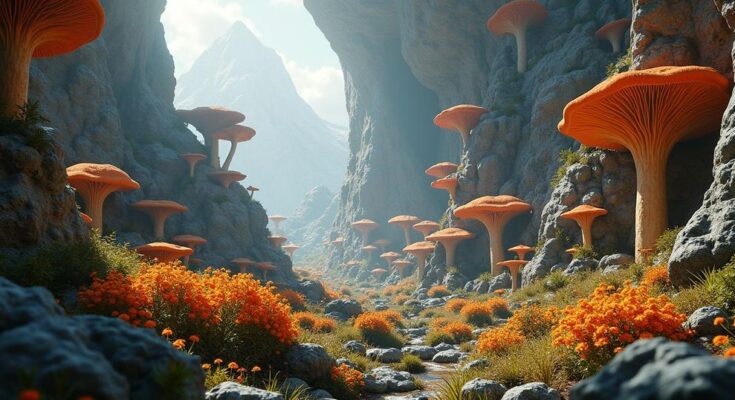NASA is advancing the Mycotecture Off Planet project, aiming to cultivate extraterrestrial habitats using fungi. With $2 million in new funding under the NIAC program, researchers are innovating methods to grow habitats for astronauts on the Moon and Mars. Through this technology, compact and lightweight habitats can expand into livable homes by adding water to dormant fungal spores, highlighting a sustainable approach to space colonization that could also benefit Earth-based applications.
In an innovative leap towards sustainable off-world living, NASA is harnessing the power of fungi to cultivate habitats for future lunar and Martian explorers. On Wednesday, the agency spotlighted the promising Mycotecture Off Planet project, which will receive a significant boost in funding through the Phase III award from NASA’s Innovative Advanced Concepts (NIAC) program. This grant, amounting to $2 million over two years, is aimed at refining technologies that allow habitats to be grown using the mycelium—the intricate, underground network of fungi—enabling explorers to literally cultivate their living spaces on distant worlds. Under the guidance of Lynn Rothschild, a senior research scientist at NASA Ames Research Center, this project emphasizes the potential of compact, lightweight habitats that could be transported to space as dormant fungi. By simply adding water, these dormant spores could flourish into fully functional living spaces, which promise to be efficiently self-contained to mitigate environmental impact on the extraterrestrial surfaces. NASA Administrator Bill Nelson remarked on the groundbreaking nature of this advancement: “As NASA prepares to explore farther into the cosmos than ever before, it will require new science and technology that doesn’t yet exist.” This sentiment drives the agency’s eagerness to explore innovative, environmentally friendly building materials derived from nature itself, hoping it could redefine how humanity encapsulates life in some of the most inhospitable terrains imaginable. The possibilities for mycelium extend beyond the confines of far-off planets; they also present earthly applications, with potential uses in water filtration and extracting precious minerals from wastewater. As the project moves towards optimizing these materials and preparing for tests in low Earth orbit, it signals a future where exploratory missions to Mars may incorporate these fungi-grown habitats, fundamentally altering how humanity approaches space colonization. The efforts by NASA under the NIAC program exemplify a visionary pursuit to create a sustainable presence in space, ensuring that even in the vastness of the universe, humankind can find ways to thrive. In summary, with both inspiring and practical implications, the Mycotecture Off Planet project encapsulates a symbiotic blend of biology and engineering that could redefine habitats, not just for astronauts but for humanity’s aspirations among the stars.
NASA’s commitment to extending human exploration to distant worlds like the Moon and Mars has sparked visionary projects that merge cutting-edge technology with sustainable practices. The Mycotecture Off Planet initiative emerges as a trailblazer in exploring how biological processes, specifically involving fungi, can facilitate the construction of habitats in extraterrestrial environments. With the vital goal of achieving long-duration missions, such research serves multiple purposes: it addresses challenges of space habitation, engages in eco-friendly approaches, and paves the way for innovative solutions that can also benefit life on Earth, like improved water purification methods. The project represents a deep delve into the possibilities that lie in using natural organisms for human survival beyond our planet.
The Mycotecture Off Planet project is a beacon of hope and innovation in NASA’s endeavors to sustain human life in space. By harnessing the intrinsic capabilities of fungi, NASA is not only pushing the boundaries of what is possible in space exploration but is also charting a course towards more responsible and sustainable practices in living beyond Earth. This initiative could allow explorers to cultivate their habitats, creating a tangible link between ecology and extraterrestrial designs, ultimately demonstrating that the future of space exploration may be as organic as it is technological.
Original Source: www.nasa.gov



